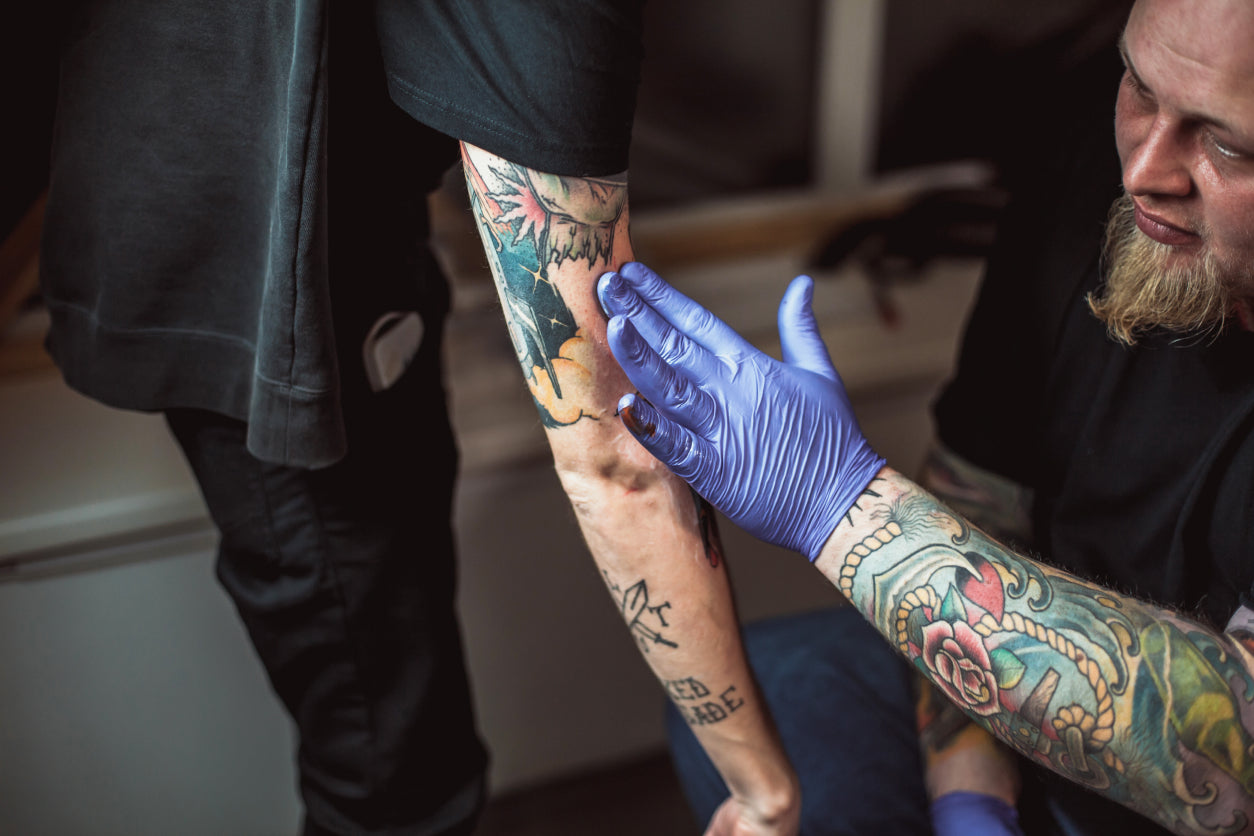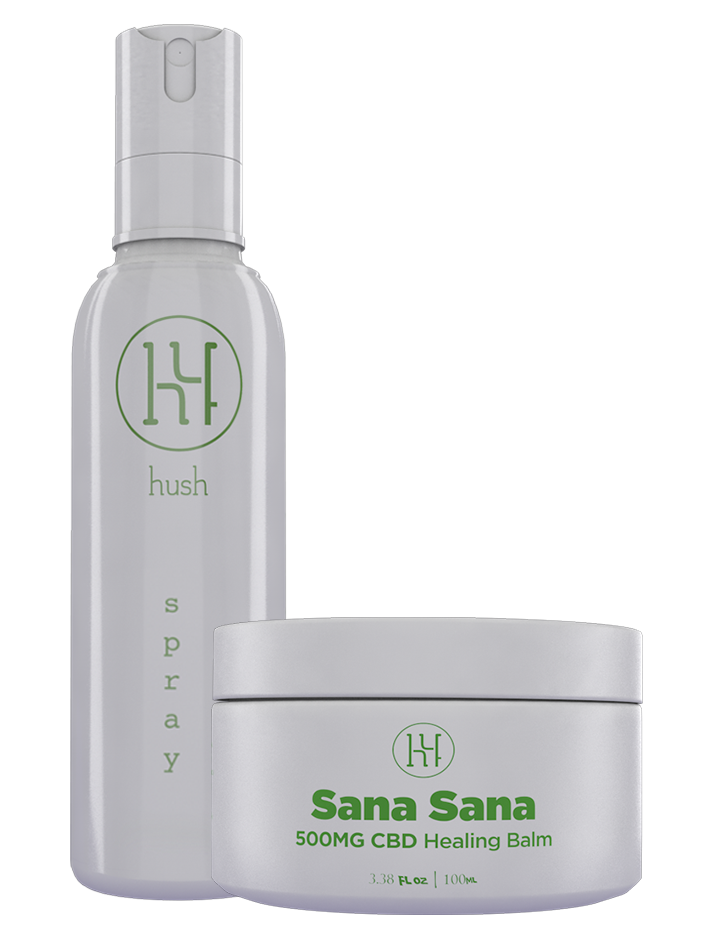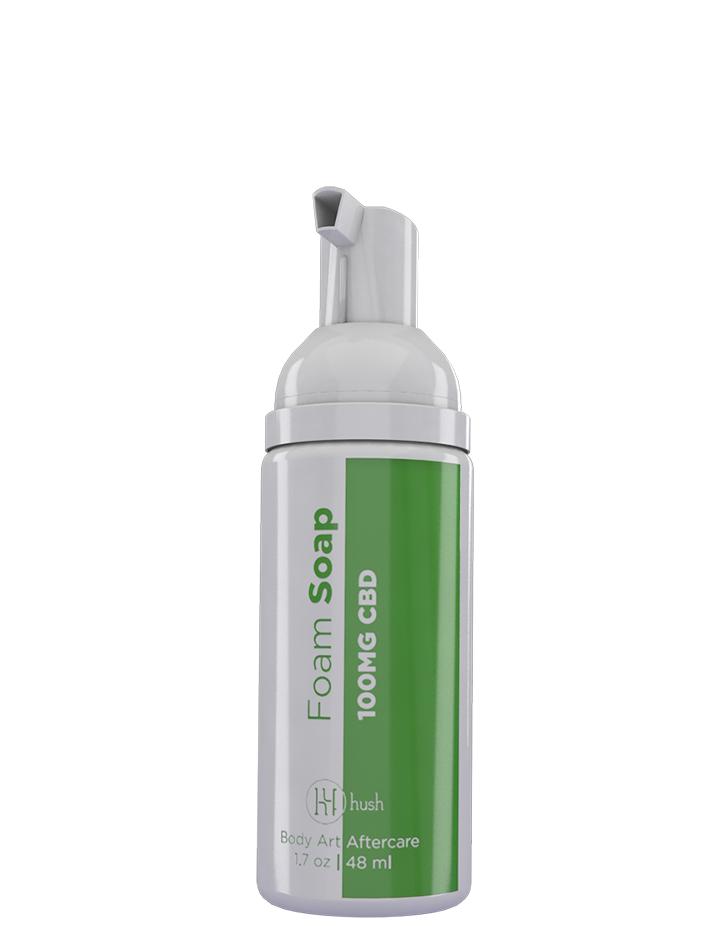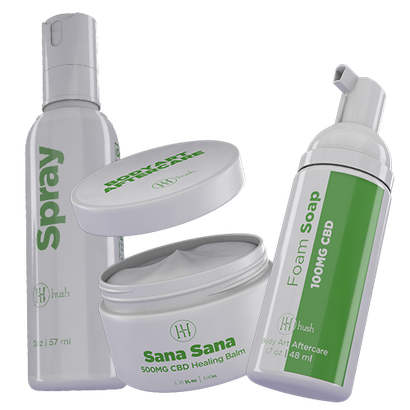
$45.99
You may have heard your tattoo artist use the term “wet healing” to describe the tattoo aftercare process. Wet healing can help your skin recover from the mild trauma of a tattoo much sooner without damaging your beautiful new art.
Here’s how wet healing makes a huge difference in the way your tattoo will look.
What Is Wet Healing?
Wet healing is a complex process, but it’s easily broken down into two familiar techniques you’ve probably used in your daily life. Let’s say you scrape your knee.
You can “air it out” (dry healing) or slap a bandage on it (wet healing). There’s a time and place for both types of healing.
Wet healing involves keeping a wound wet until the skin completely heals. The source of the “wet” comes from two things. You’ll use some type of exterior moisturizer that serves as a protective barrier to seal in the skin’s natural moisture.
Your body’s water reserves, plasma healing factors, and nutrient-rich blood are the other components. Your body makes everything it needs to heal itself. All you need to do is keep it contained and let your body do what it already knows how to do. It’s kind of amazing!
Wet Healing vs. Dry Healing
Skin needs to be a little bit wet to heal. Technically, wet healing is always the best choice — because your body knows what it’s doing. There may be situations where wet healing techniques seem a little bit excessive, so it seems easier to skip them, but it’s best not to.
If you have a very small scrape for a tiny minor surface wound, it’s a little excessive to wrap and treat the wound. If you know a wound will heal itself in a couple of days and it isn’t really bleeding, it probably won’t be the end of the world if you wash it very well and tend to it minimally.
If the wound is more than mild or is larger in size, you shouldn’t let the wound dry out (AKA a tattoo, which is a major wound). Exposing the wound to air can lead to flaking, peeling, visible scarring, or even an increased chance of infection.
Is It Better To Use Wet Healing Techniques for a Tattoo?
Research suggests that wet healing is superior to dry healing for almost every kind of wound, including a tattoo. Dry skin has a hard time regenerating itself because it gets scabby and crusty and pulls away from itself (ouch).
When your body is trying to form new, healthy cells and close a wound, it benefits far more from moisture. And your body creates that moisture itself!
What Happens If You Dry Heal a Tattoo?
Tattoo artists will passionately tell you that dry healing your tattoo is equivalent to wrecking it. If you let your tattoo get scabby, the wound will close. The scabs will eventually fall off and take most of the ink with them — it can be a gnarly situation.
Color may completely come out of your tattoo. Black ink may turn to muddied gray-blue splotches that make a new tattoo look like it’s decades old. It’s never a good idea to dry heal a tattoo, so if anyone ever recommends it, maybe don’t listen.
How Do I Wet Heal a Tattoo?
Wet healing a tattoo will protect your art and support your body throughout the healing process. It only takes a couple of weeks of wet healing for a tattoo to finish healing completely. If you stay on top of it, you’ll love the results.
First Things First: Follow Your Tattoo Artist’s Aftercare Instructions
An experienced tattoo artist has to know a lot more than how to be a good artist. Tattoo artists are trained in things like first aid and wound care.
They love the piece they made for you and want you to love it forever. The aftercare instructions they send you home with are based on wound care practices that equally prioritize safe healing and preserving your inked skin.
You should always follow these instructions to the letter. If you ever have any questions or concerns, reach out to your tattoo artist. They’re eager to help. They’d rather hear from you before you misunderstand something and make a mistake, so no question or concern is too small.
Leave the Wrap On for As Long as Necessary
Most tattoo artists use a clear sheeting material that sticks to the skin and covers the tattoo. Your tattoo artist will tell you when to take it off, care for your tattoo, and stick a new sheet on. They’ll also tell you when you no longer need to use sheets to cover your ink.
It’s normal for fluid bubbles to collect underneath the sheet. They may look a little gross or worrying, but they’re completely normal. These bubbles, called tattoo ink sacks, contain fluid full of your body’s natural healing factors.
They’re part of the wet healing process, and leaving them be is okay. Resist the urge to pop or drain them. But! If any of the covering peels up and reveals the inked skin or the ink saks leak out of a corner, take the wrap off and clean it. These leaks can allow bacteria and germs to get in and contaminate the wound.
Choose Deeply Moisturizing Aftercare Products

It seems like there are millions of different creams, balms, lotions, and ointments designed to protect healing skin. Most of these products don’t do much more than create a barrier that prevents moisture and healing factors from exiting through your tattoo. They act as a second skin that keeps your tattoo wet.
A protective barrier is an essential part of wet wound healing, but it doesn’t provide any additional benefits to the healing process. Our tattoo aftercare set is infused with active botanical ingredients like skin-soothing aloe vera and CBD to provide the skin with additional support throughout the healing process.
You can keep using the balm even after your tattoo has completely healed to keep the skin soft and vibrant.
Reapply Your Moisture Barrier Throughout the Day
Protective skin balms are supposed to leave a little residue on the skin's surface, which acts as a shield between your fresh tattoo and the environment. It’s designed to mimic the natural barrier of your skin.
It’s normal for an ointment barrier to slowly rub off throughout the day. Check your tattoo periodically and reapply your balm if you feel like it’s mostly worn away. You shouldn’t need too many touch-ups — it’s more a case of “better safe than sorry” to ensure you’re covered.
Wet Healing Is the Way To Go
Wet wound healing is superior to any other type of healing. It’s just as effective for tattoos as it is for injuries. If you let your tattoo dry out during the healing process, you may end up doing more harm than good.
Make sure you stay on top of the aftercare process for about six weeks after your session. It’s a lot of work, but it’s worth it for a tattoo that will stay beautiful for decades.
Sources:
Moist Wound Healing with Commonly Available Dressings | Advances in Wound Care
Proper wound care: How to minimize a scar | American Academy of Dermatology
Role of topical emollients and moisturizers in the treatment of dry skin barrier disorders | PubMed





